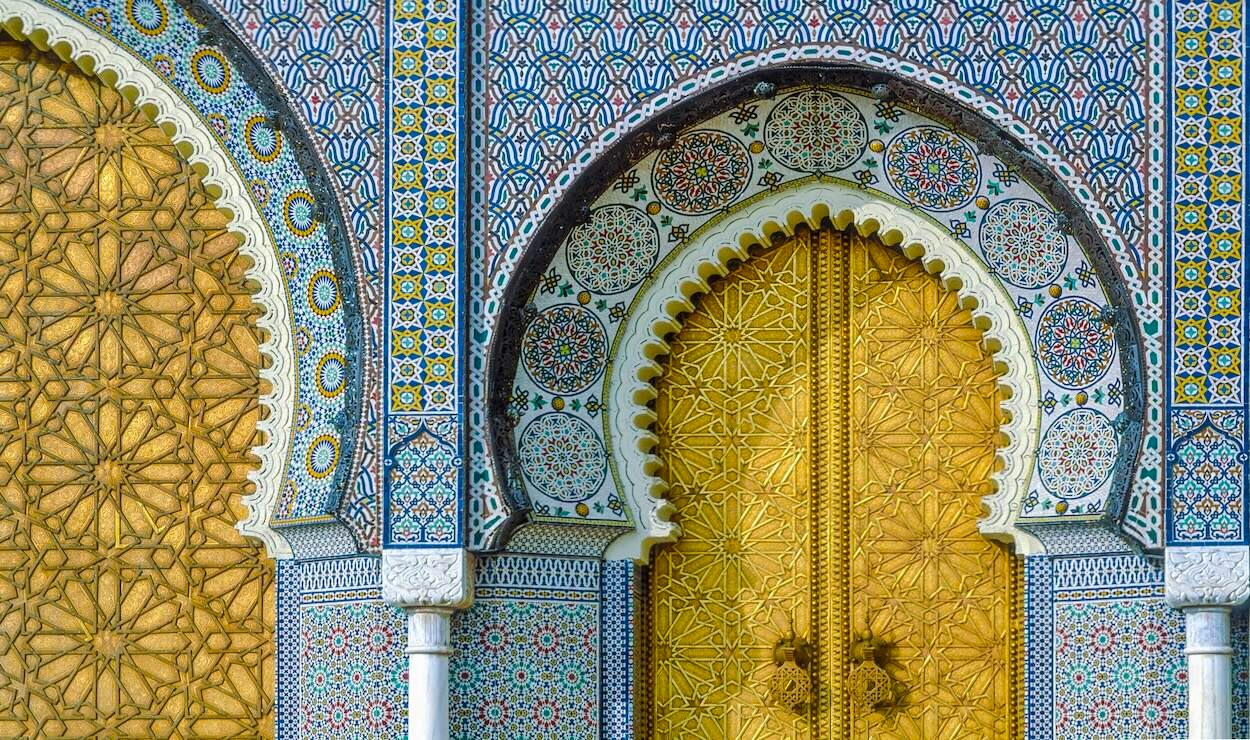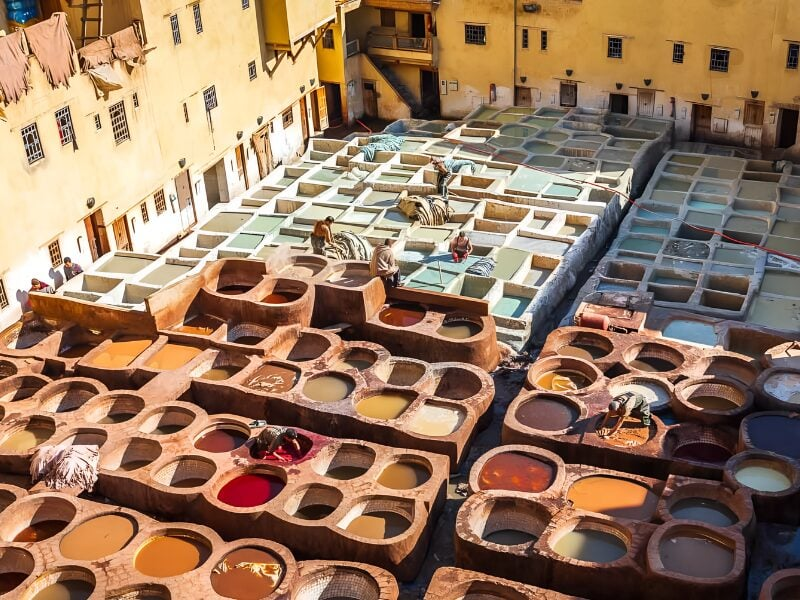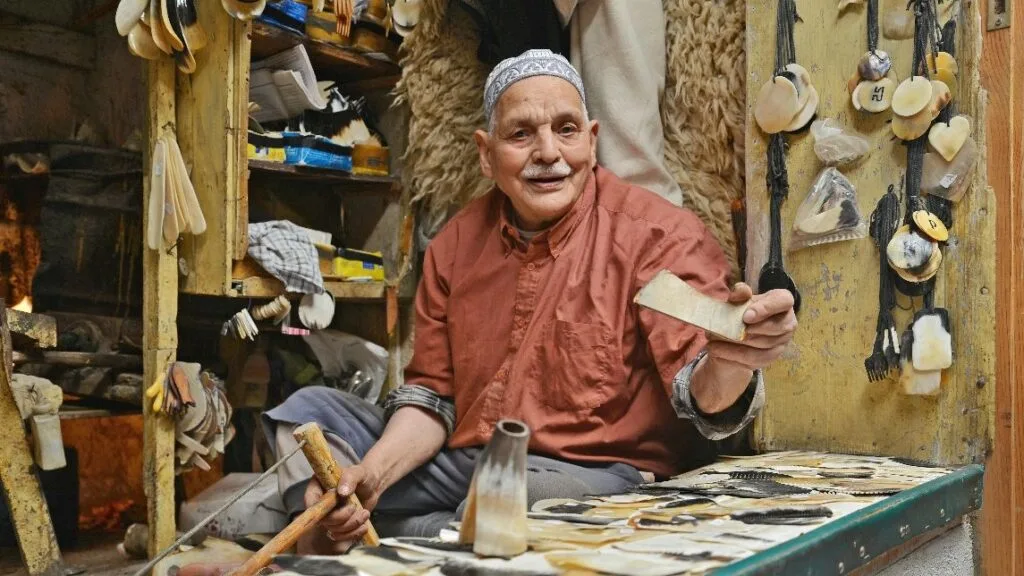- Published on
Unveiling the Ancient Art of Moroccan Leather Tanning in Fes Medina
- Authors

- Name
- Adil ABBADI
Introduction
In the labyrinthine alleys of Fes Medina, a UNESCO World Heritage Site, lies a hidden world of artisans, where the ancient art of Moroccan leather tanning has been perfected over centuries. This centuries-old tradition, passed down through generations, has not only survived but continues to thrive, captivating visitors with its rich history, cultural significance, and exceptional craftsmanship.

- Cultural Context
- Traditional Significance
- Modern Relevance
- Cultural Preservation
- Conclusion
- Cultural Call-to-Action
Cultural Context
Fes Medina, the oldest of Morocco's four imperial cities, has been a hub of artisanal activity since the 9th century. The city's strategic location at the crossroads of trade routes facilitated the exchange of goods, ideas, and techniques, including leather tanning, which was introduced by the Moors from Andalusia. Over time, Moroccan artisans developed their unique approach to leather tanning, blending traditional methods with innovative techniques.
Traditional Significance
In Moroccan culture, leather tanning is not only an artisanal craft but also an integral part of the country's rich heritage. The process of transforming raw hides into supple, luxurious leather is a labor-intensive, time-honored tradition that requires great skill and patience. Artisans in Fes Medina continue to use age-old methods, passed down through generations, to create exquisite leather goods, from intricately tooled handbags to majestic ceremonial saddles.

Modern Relevance
While modern machinery and mass production have transformed the global leather industry, Moroccan artisans in Fes Medina remain committed to preserving their traditional craft. In recent years, there has been a renewed interest in artisanal leather goods, driven by consumers seeking unique, high-quality products that embody cultural heritage and sustainability. As a result, Moroccan leather has become highly prized, not only for its exceptional quality but also for its cultural significance and the economic benefits it brings to local communities.
Cultural Preservation
Efforts to preserve and promote the traditional art of Moroccan leather tanning are underway, with organizations and initiatives working to support artisans, improve working conditions, and develop sustainable practices. The Fes Medina leather tanneries, recognized as an Intangible Cultural Heritage of Humanity by UNESCO, continue to attract visitors and artisans from around the world, ensuring the transmission of this ancient knowledge to future generations.

Conclusion
The ancient art of Moroccan leather tanning in Fes Medina is a testament to the city's rich cultural heritage and the artisans' unwavering commitment to their craft. As we navigate the complexities of modern life, this centuries-old tradition reminds us of the importance of preserving our cultural roots, promoting sustainable practices, and celebrating the beauty of human craftsmanship.
Cultural Call-to-Action
As we marvel at the intricate beauty of Moroccan leather goods, let us not forget the artisans behind the craft. Let us support their work, appreciate their dedication, and recognize the cultural significance of this ancient tradition. By doing so, we ensure the continued thriving of this remarkable craft, allowing future generations to appreciate the beauty and craftsmanship of Moroccan leather tanning in Fes Medina.
